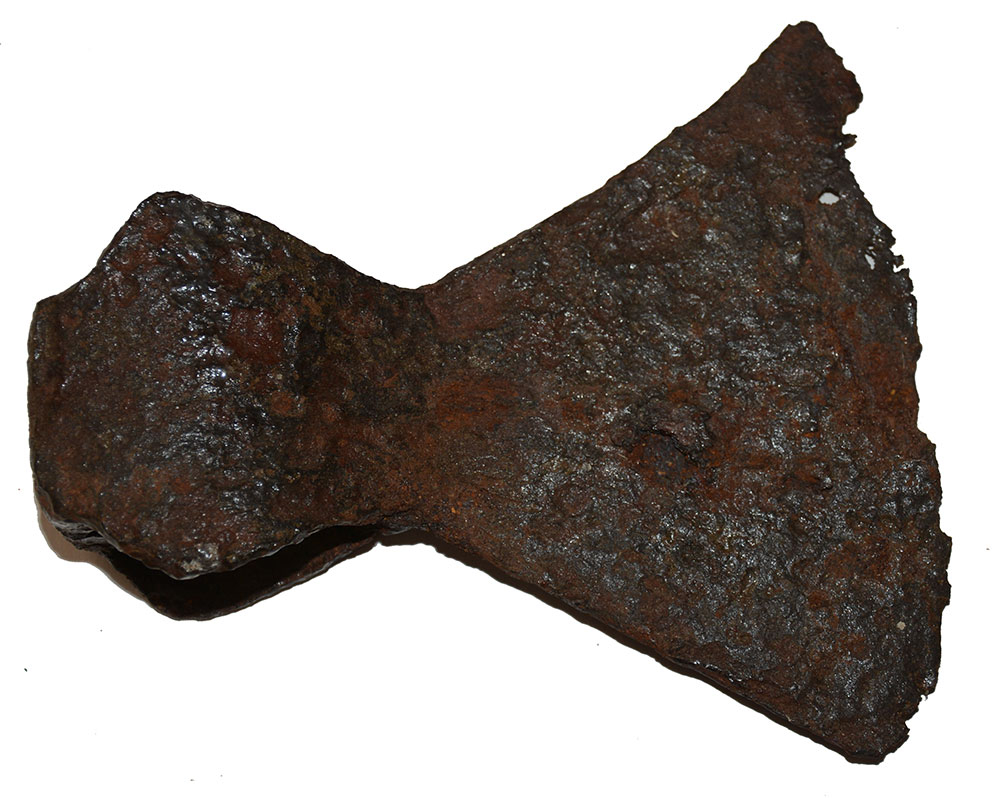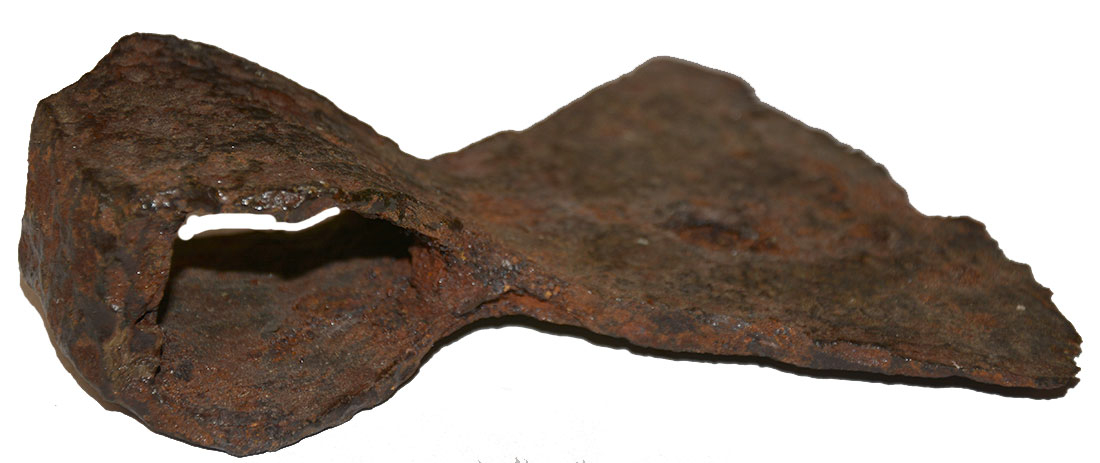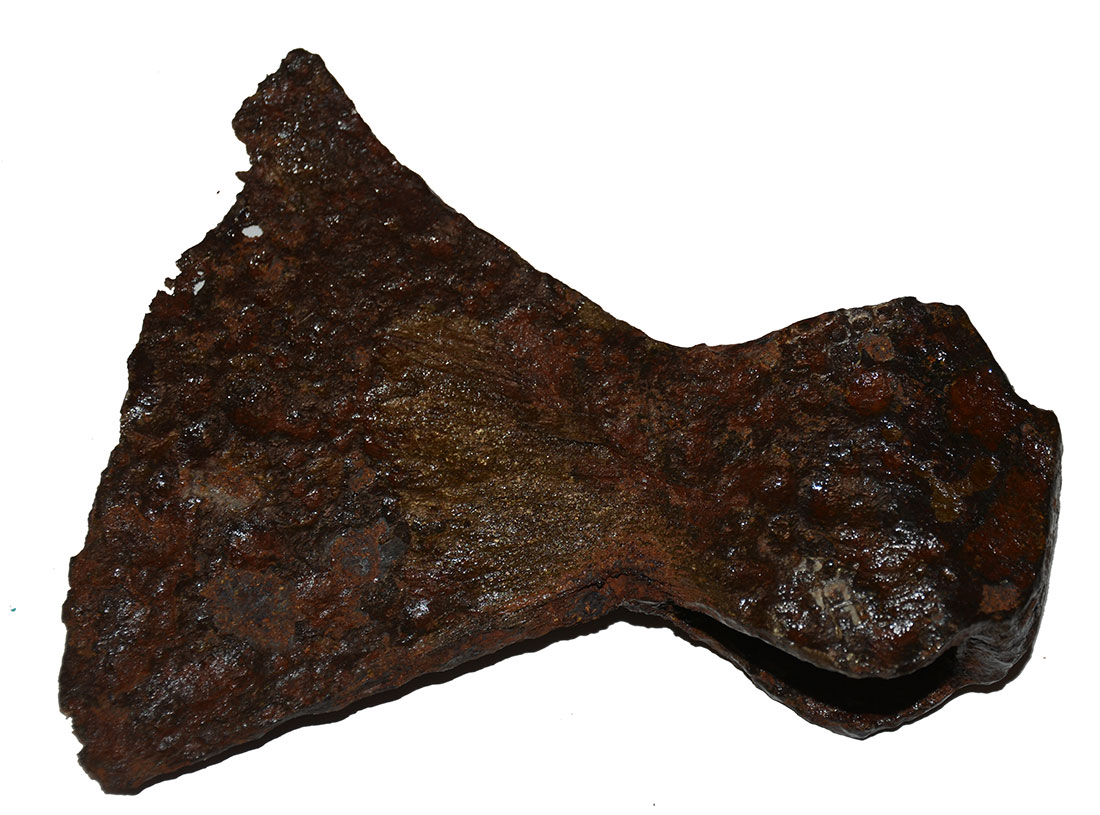site search
online catalog
EARLY AX HEAD FROM CASTINE, MAINE

Hover to zoom



$125.00 SOLD
Quantity Available: None
Item Code: 236-1116
Offered here is a nice early iron ax head. Recovered at Castine, Maine by author/publisher Dean Thomas.
Ax profile is of very early design and measures approximately 6” from blade edge to back of socket with a 5” long blade edge. Iron is rusty and pitted as is expected from a “dug” relic this old. There is some loss along the blade edge. The piece was coated with lacquer at some point, which seems thin on one side.
Castine, Maine was the site of the 1779 Penobscot Expedition. This was a 44-ship American naval armada assembled by the Province of Massachusetts Bay. The flotilla of 19 warships and 25 support vessels sailed from Boston on July 19, 1779, carrying an expeditionary force of more than 1,000 American colonial marines and militiamen. Also included was a 100-man artillery detachment under the command of Lt. Colonel Paul Revere. The goal was to reclaim control of mid-coast Maine from the British who had captured it a month earlier and renamed it New Ireland. It was the largest American naval expedition of the war. The fighting took place on land and at sea around the mouth of the Penobscot and Bagaduce rivers at Castine, Maine, over a period of three weeks in July and August. It resulted in the United States' worst naval defeat until Pearl Harbor 162 years later in 1941. [jet][ph:L]
~~~~~~~~~~~~~~~~~~~~~~~~~~~~~~~~~~~
THIS ITEM, AS WITH ALL OTHER ITEMS AVAILABLE ON OUR WEB SITE,
MAY BE PURCHASED THROUGH OUR LAYAWAY PROGRAM.
CLICK HERE FOR OUR POLICIES AND TERMS.
THANK YOU!
Inquire About EARLY AX HEAD FROM CASTINE, MAINE
Most Popular
Historical Firearms Stolen From The National Civil War Museum In Harrisburg, Pa »
Theft From Gravesite Of Gen. John Reynolds »
Selection Of Unframed Prints By Don Troiani »
Fine Condition Brass Infantry Bugle Insignia »
British Imported, Confederate Used Bayonet »
Scarce New Model 1865 Sharps Still In Percussion Near Factory New »
featured item
NON-REGULATION SILVER GRIPPED PRESENTATION SWORD BY SCHUYLER, HARTLEY & GRAHAM - LT. JAMES MOFFAT, 16TH NEW YORK CAVALRY
This presentation sword has very impressive deeply cast and chased mounts and silver gripped hilt. Schuyler, Hartley and Graham assembled and sold a wide variety of swords that were often highly embellished and upgraded from regulation patterns, to… (870-653). Learn More »


